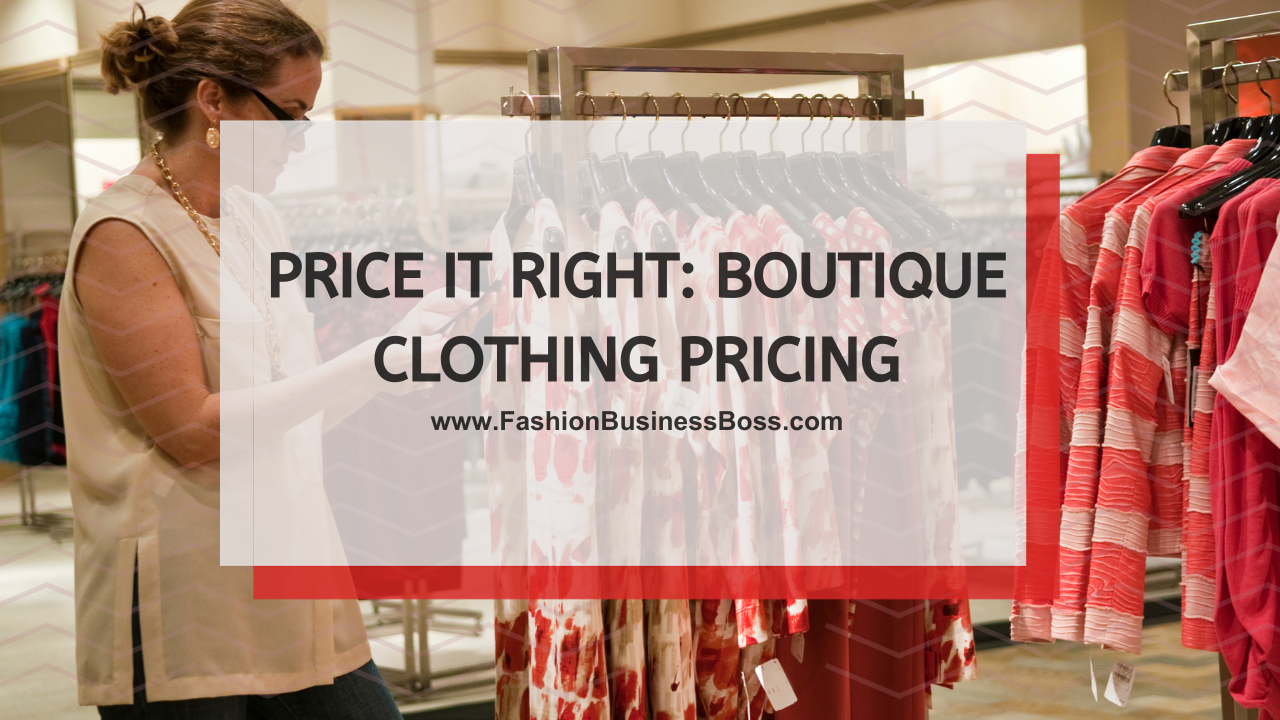Setting up a boutique is an exciting venture, especially if you’re passionate about fashion. While curating a unique collection of clothing is essential, one aspect that can make or break your boutique’s growth is pricing.
To effectively price clothing for your boutique, consider wholesale costs, overhead, target audience, and market trends. Use strategies like keystone pricing and bundle deals, and be transparent with customers. Adjust prices based on sales and feedback for continued growth.
In this article, we’ll walk you through the intricate process of pricing clothing for your boutique, helping you strike that perfect balance between stability and customer satisfaction.
Understanding Your Costs

Before you can determine the right price for your clothing items, it’s essential to have a clear understanding of your costs. Calculate the following:
Wholesale Cost
This is the price at which you acquire your clothing items from suppliers. It’s the foundation of your pricing strategy.
Read more about: How to Make Your Mark in Fashion: Starting a Clothing Line
Overhead Expenses
Consider all fixed and variable expenses, such as rent, utilities, insurance, and employee salaries. Divide these costs by the number of items you plan to sell to allocate a portion of your overhead expenses to each clothing item.
Marketing and Promotion
Include costs related to marketing, advertising, and promotion efforts, as they play a significant role in attracting customers to your boutique.
Profit Margin
Decide on the profit margin you want to achieve. A common rule of thumb is to aim for a 50-60% margin, but this can vary depending on your business goals.
Understanding Your Target Audience
Knowing your target audience is key to setting the right prices. Consider factors like:
Demographics
Who are your customers? Age, gender, income level, and lifestyle all impact their willingness to pay.
Brand Perception
Does your boutique focus on luxury, high-end fashion, or affordable and trendy items? The perceived value of your brand will influence pricing.
Market Research
Conduct thorough market research to understand your competitors and the industry standards. Analyze:
Competitor Pricing

Check how your competitors price similar clothing items. This will give you a benchmark to work with.
Market Trends
Stay updated on fashion trends and how they affect pricing. Seasonal and trendy items may have different pricing strategies.
Read more about: How to Make Clothes to Sell: Fashion Your Dreams
Pricing Strategies
Now that you have a clear grasp of your costs, target audience, and the market, it’s time to explore pricing strategies:
Keystone Pricing
Doubling the wholesale cost is a straightforward method. For instance, if an item costs you $50, you would sell it for $100. This strategy is common for boutique businesses.
Psychological Pricing
Using prices like $99.99 instead of $100 can make items seem more affordable.
Bundle Pricing
Offering discounts for buying multiple items encourages customers to spend more in one visit.
Premium Pricing
If your boutique is focused on luxury or unique pieces, you can price your items higher to reflect their exclusivity.
Testing and Adjusting
Pricing isn’t set in stone. Monitor your sales and gather feedback from customers. If certain items are selling well, consider increasing the price slightly. Conversely, if an item isn’t moving, it might be time to lower the price or offer promotions.
Conclusion
Pricing clothing for your boutique requires careful consideration and ongoing evaluation. By understanding your costs, knowing your target audience, conducting market research, and employing effective pricing strategies, you can create a pricing structure that not only sustains your business but also delights your customers. Remember, pricing is an art, and with practice, you’ll master it to perfection.
Frequently Asked Questions

Q: How do I determine the right pricing for clothing in my boutique?
A: To set the right prices, calculate your wholesale costs, consider overhead expenses, understand your target audience, and research market trends. Employ pricing strategies that align with your brand and monitor sales for adjustments.
Q: What’s the significance of understanding my target audience when pricing clothing?
A: Knowing your audience’s demographics, preferences, and buying power helps tailor your pricing strategy to their expectations. It ensures your clothing items are both appealing and affordable to your customers.
Q: Should I always follow a keystone pricing strategy for my boutique?
A: While keystone pricing is a common approach, it may not suit every boutique. Evaluate your specific market, brand positioning, and customer base to determine if this strategy aligns with your goals.
To learn more about starting your own clothing business, check out my startup documents here.
Please note that the contents of this blog are for informational and entertainment purposes only and should not be construed as legal advice. Any action taken based on the information provided in this blog is solely at your own risk. Additionally, all images used in this blog are generated under the CC0 license of Creative Commons, which means they are free to use for any purpose without attribution.

Meet Shawn Chun: Entrepreneur and Fashion Business Fan.
I’m a happy individual who happens to be an entrepreneur. I have owned several types of businesses in my life from a coffee shop to an import and export business to an online review business plus a few more and now I create online resources for those interested in starting new ventures. It’s demanding work but I love it. I do it for those passionate about their business and their goals. That’s why when I meet a designer or boutique owner at a craft fair, farmers market, retail location or anywhere else I see myself. I know how hard the struggle is to retain clients, find good employees and keep the business growing all while trying to stay competitive.
That’s why I created Fashion Business Boss: I want to help fashion business owners like you build a thriving business that brings you endless joy and supports your ideal lifestyle.

